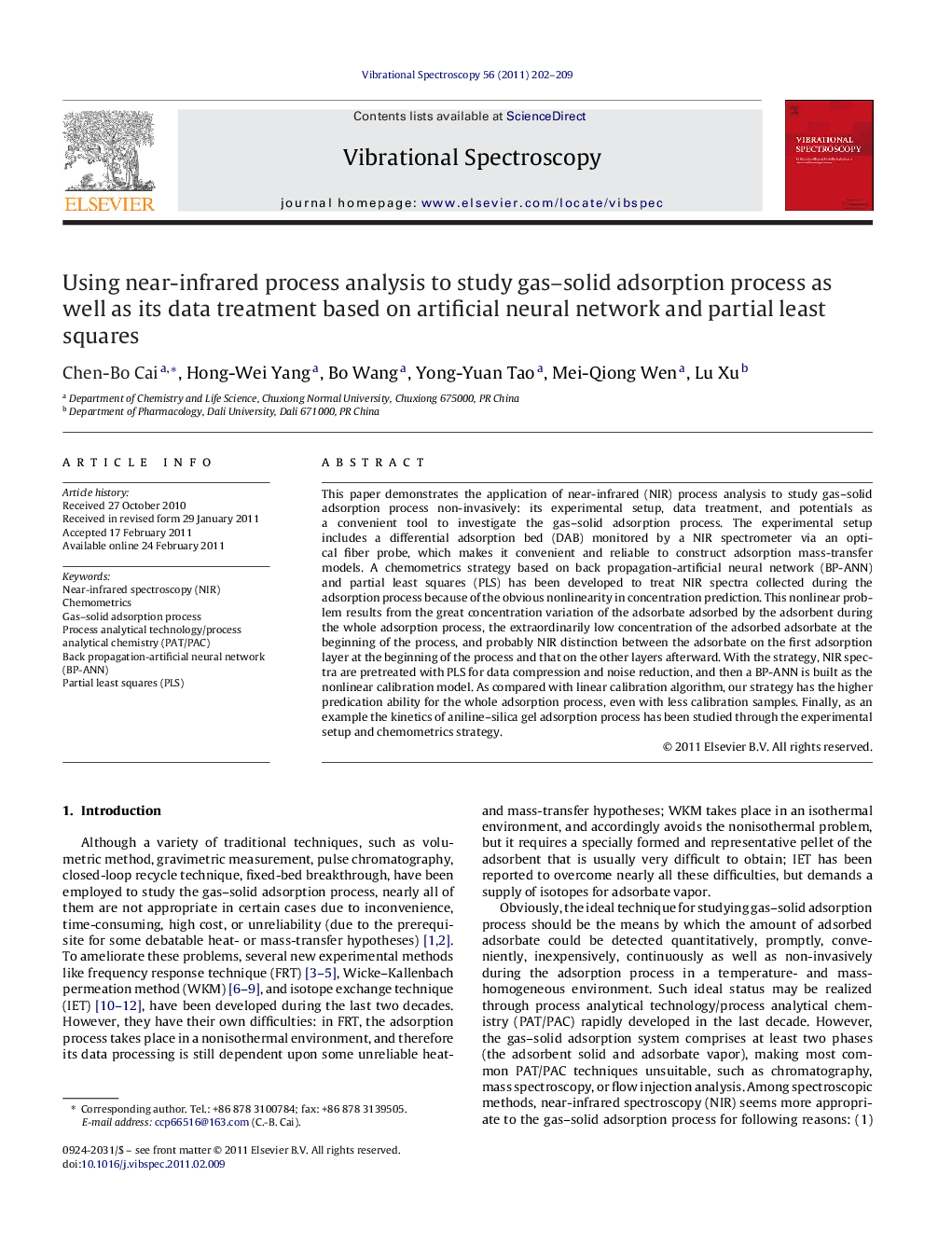| Article ID | Journal | Published Year | Pages | File Type |
|---|---|---|---|---|
| 1250598 | Vibrational Spectroscopy | 2011 | 8 Pages |
This paper demonstrates the application of near-infrared (NIR) process analysis to study gas–solid adsorption process non-invasively: its experimental setup, data treatment, and potentials as a convenient tool to investigate the gas–solid adsorption process. The experimental setup includes a differential adsorption bed (DAB) monitored by a NIR spectrometer via an optical fiber probe, which makes it convenient and reliable to construct adsorption mass-transfer models. A chemometrics strategy based on back propagation-artificial neural network (BP-ANN) and partial least squares (PLS) has been developed to treat NIR spectra collected during the adsorption process because of the obvious nonlinearity in concentration prediction. This nonlinear problem results from the great concentration variation of the adsorbate adsorbed by the adsorbent during the whole adsorption process, the extraordinarily low concentration of the adsorbed adsorbate at the beginning of the process, and probably NIR distinction between the adsorbate on the first adsorption layer at the beginning of the process and that on the other layers afterward. With the strategy, NIR spectra are pretreated with PLS for data compression and noise reduction, and then a BP-ANN is built as the nonlinear calibration model. As compared with linear calibration algorithm, our strategy has the higher predication ability for the whole adsorption process, even with less calibration samples. Finally, as an example the kinetics of aniline–silica gel adsorption process has been studied through the experimental setup and chemometrics strategy.
